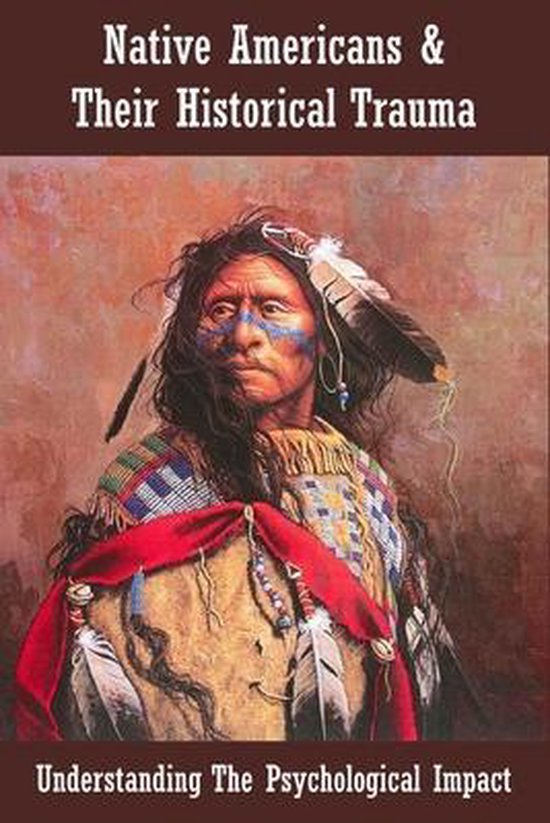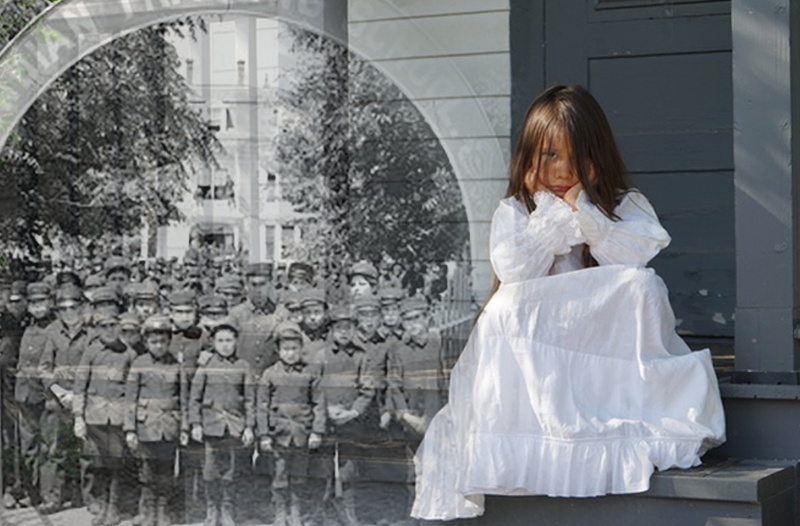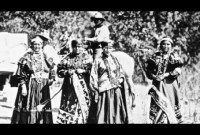
Echoes of Resilience: The Transformative Journey of Native American Historical Trauma Healing
The tapestry of American history is rich with threads of innovation and progress, but it also bears indelible stains of injustice and profound suffering, particularly for its Indigenous peoples. From the arrival of European colonizers, Native American nations have endured centuries of systematic oppression, land dispossession, forced assimilation, and cultural eradication. These experiences, far from being relics of the past, cast long, dark shadows into the present, manifesting as what scholars call "historical trauma." Yet, amidst this profound legacy of pain, a powerful, quiet revolution is unfolding: the deeply personal and profoundly communal journey of historical trauma healing.
Historical trauma, a concept largely pioneered by Dr. Maria Yellow Horse Brave Heart (Hunkpapa Lakota), refers to the cumulative emotional and psychological wounding over the lifespan and across generations, emanating from massive group trauma. For Native Americans, this trauma encompasses a litany of horrors: the genocidal campaigns of the Indian Wars, the forced removal of tribes along the Trail of Tears, the devastation of diseases brought by Europeans, and perhaps most enduringly, the Indian Boarding School era.

From the late 19th century into the mid-20th century, hundreds of thousands of Native American children were forcibly removed from their families and communities and sent to boarding schools. The explicit goal was to "kill the Indian, save the man" – stripping children of their language, culture, spiritual beliefs, and even their names. They were often subjected to physical, emotional, and sexual abuse, forbidden to speak their native tongues, and punished for practicing their traditions. When they returned home, if they returned at all, many were alienated from their families and traditional ways, unable to fit into either world, carrying deep wounds that were often passed down to their children and grandchildren.
The legacy of these traumas is starkly visible in contemporary Native American communities. Disproportionately high rates of suicide, substance abuse, diabetes, heart disease, and mental health disorders are not merely individual afflictions; they are symptoms of unresolved historical grief and intergenerational trauma. Poverty, lack of access to quality healthcare, and systemic discrimination exacerbate these issues, creating a complex web of challenges.
However, the narrative of Native American life is not solely one of victimhood. It is, profoundly, a narrative of resilience, survival, and the enduring strength of spirit. The healing journey is a testament to this resilience, driven by Indigenous peoples themselves, rooted in their ancient wisdom and an unwavering commitment to their future generations.
Reclaiming Culture: Language, Ceremony, and Identity
At the heart of historical trauma healing lies the revitalization of culture. For centuries, colonial powers sought to eradicate Indigenous languages, spiritual practices, and traditional ways of life, recognizing them as the bedrock of Native identity and sovereignty. Today, communities are fiercely reclaiming these elements, understanding that culture is not just heritage, but medicine.
Language immersion programs, from preschools to adult learning centers, are flourishing across the continent. Learning one’s ancestral language is a powerful act of decolonization and healing. As an elder once remarked, "When we speak our language, we are not just speaking words; we are speaking the wisdom of our ancestors, the songs of our land, and the prayers of our people. It connects us back to who we truly are." These languages carry complex worldviews, ecological knowledge, and spiritual understandings that are vital for holistic well-being.
Traditional ceremonies, once driven underground, are now openly practiced and thriving. Powwows, sweat lodges, vision quests, pipe ceremonies, and healing circles provide spaces for spiritual connection, community bonding, and emotional release. These practices offer pathways for individuals to process grief, reconnect with their spiritual roots, and find a sense of belonging that was deliberately fractured by past policies. They are not merely rituals; they are living, breathing mechanisms for psychological and spiritual repair, offering a sense of continuity and purpose that transcends the pain of the past.
Land as Medicine: The Sacred Connection

For Indigenous peoples, the land is not merely property; it is a relative, a source of identity, sustenance, and spiritual connection. The forced removal from ancestral lands and the ongoing destruction of natural environments are profound sources of trauma. Consequently, healing often involves reconnecting with the land.
The "Land Back" movement, advocating for the return of ancestral lands to Indigenous stewardship, is gaining momentum. This movement is not just about ownership; it’s about restoring ecological balance, practicing traditional land management, and enabling communities to live in harmony with the environment in ways that foster health and well-being. Initiatives like tribal land trusts, traditional food sovereignty projects, and culturally-informed environmental conservation efforts are tangible examples of this healing. Engaging in traditional hunting, fishing, gathering, and farming practices reconnects individuals to ancient foodways, promoting physical health and reinforcing cultural identity.
Sovereignty and Self-Determination: A Path to Wellness
True healing for Native American communities is inextricably linked to sovereignty and self-determination. The ability to govern themselves, manage their resources, and design their own systems of education, healthcare, and justice is crucial for breaking cycles of dependency and fostering community well-being.
Tribal nations are increasingly developing culturally relevant mental health services that integrate traditional healing practices with contemporary therapeutic approaches. These services recognize that Western models of therapy may not always be effective for Indigenous clients, who often prefer community-based, holistic approaches that acknowledge spiritual dimensions and intergenerational impacts. Programs that focus on family systems, collective trauma, and cultural identity are proving more effective in addressing the deep-seated issues stemming from historical trauma.
Furthermore, economic development initiatives, managed by tribes, empower communities by creating jobs, fostering self-sufficiency, and providing resources for essential services. When tribes control their own destinies, they can prioritize the well-being of their members, investing in programs that address historical trauma directly and proactively.
Educating for Change: Truth and Reconciliation
Healing is not just an internal process within Native communities; it also requires a broader societal reckoning. Truth and reconciliation efforts, while not as formalized in the U.S. as in Canada, are nevertheless underway. This involves acknowledging the full scope of historical injustices, educating non-Indigenous populations about the true history of colonization, and challenging persistent stereotypes and systemic racism.
Museums, educational institutions, and grassroots organizations are working to share Indigenous perspectives and histories, fostering understanding and empathy. For instance, the National Native American Boarding School Healing Coalition (NABS) is dedicated to advocating for the healing of survivors, documenting the history of the schools, and promoting reconciliation. Their work highlights the ongoing need for government accountability and support for healing initiatives.
The Path Forward: Resilience and Hope
The journey of historical trauma healing is complex, multifaceted, and ongoing. It is not a linear path but a cyclical one, marked by both profound challenges and inspiring triumphs. The deep wounds inflicted by centuries of oppression cannot be erased overnight, but they can be transformed.
"Our ancestors endured unimaginable suffering so that we could be here today," states a young Navajo artist. "Their resilience is in our DNA. Healing is not about forgetting their pain, but about honoring their sacrifice by living our fullest, most authentic Indigenous lives."
This sentiment encapsulates the spirit of Native American historical trauma healing. It is a testament to the enduring human spirit, the profound strength of cultural identity, and the unwavering hope for a future where Indigenous nations thrive, empowered by their history, guided by their traditions, and united in their pursuit of collective well-being. The echoes of resilience are growing louder, a vibrant chorus of healing, reclamation, and enduring strength that promises a brighter future for generations to come.


